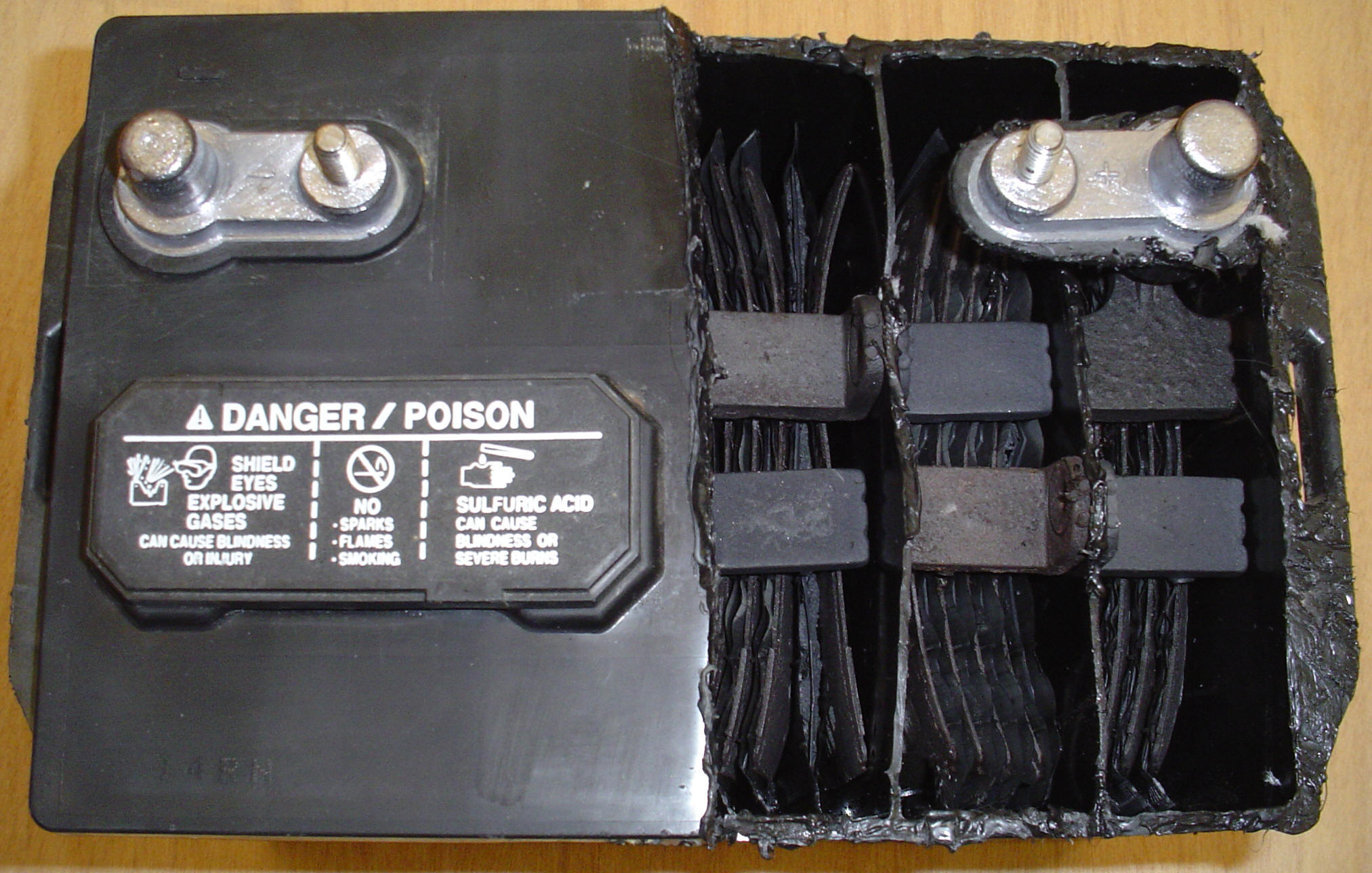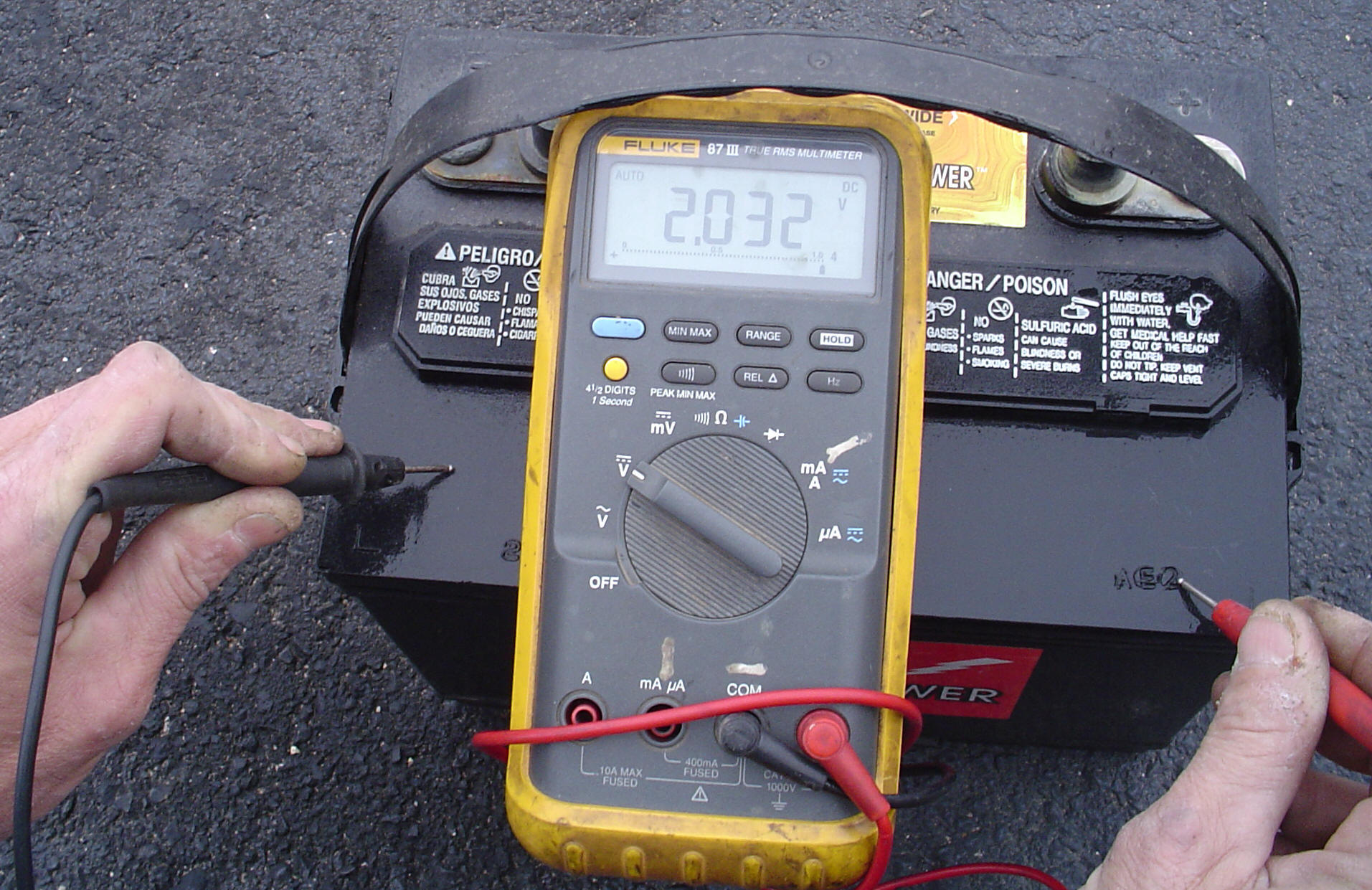
Put a Charge in Your Travel Plans,
Maintain Your RV Battery
Batteries are always a common problem in RV consumer maintenance. This is not only true at my shop, but as I network with dealers, technicians and factory service reps around the country, this is a common topic of conversation. I have chosen to cover the subject of batteries and their care from a consumer standpoint.
To get the most enjoyment from your RV, it is essential you have a good 12VDC source. The battery is the source if a normal 120VAC source is not available. When functioning properly, the 120VAC source creates the 12VDC source. I must mention here that although 120VAC is being used, the battery should still be hooked up and properly maintained. An improperly maintained battery can cause much of the 12VDC system to malfunction even with a 120VAC source creating 12VDC for the system.
In todayís RV, many of the appliances and control systems run on 12VDC. In other words, the 12VDC in the appliance controls the propane or 120VAC for the appliance. Therefore, it is imperative that a correct 12VDC source be available for these control systems. Such things as jacks, slide rooms, water pumps and electric steps or awnings must simply have a good source of 12VDC to operate properly.
A battery is simply an electro chemical device for storing energy. In a lead acid battery, which is the most common in todayís RV, lead plates are immersed in a solution of approximately 35% Sulfuric Acid and 65% Distilled Water. This solution is referred to as electrolyte. Battery current is produced by a chemical reaction between the materials in the plates and this electrolyte solution. As current flows from the battery, chemical changes occur and lead sulfate forms on the cell plates of the battery. As the battery nears discharge, the electrolyte approaches becoming pure water, thus no chemical reaction and no current.
STARTING AND MARINE Ė DEEP CYCLE BATTERIES
Starting batteries are obviously those used to start the engine. They have a large number of thin plates in each cell in order to release a bunch of energy quickly. The larger plate surface area, due to more plates, allows this. These batteries do wonderful for what they are designed for, but generally fail after only a few deep cycle uses. The plates in this type of battery appear much like a sponge which creates a larger surface area.
Deep cycle batteries are designed to be discharged down as much as 80% time after time. The plates are much thicker and solid lead with no sponge appearance. This allows for the true deep cycle actions.

The plates are different on starting and deep cycle batteries.
I often go to an RV and find marine batteries where deep cycle should be. While this is sort of OK. I would always advise RVers to have a true deep cycle battery for the RV portion of the RV. Many sales people do not know the difference between marine and deep cycle, they will sell a marine as deep cycle or worse yet, tell the customer a starting battery will work fine as a deep cycle. Do not purchase anything but a true deep cycle battery for deep cycle purposes if you want the best results.
Now that we have examined the three use type batteries, lets explore the major types of batteries and their characteristics. The most common and least expensive is the flooded cell. These batteries are very forgiving of over charging. Some of these are a sealed type with no provisions for adding distilled water. I do not like these for that reason only. The charging systems on many RVís are not the most efficient, as a result. They often overcharge the battery and the electrolyte gasses. With a sealed battery, it is not possible to replace the fluid.
Another type of battery that is becoming popular in RVís is the Gel Cell battery. This battery uses gelled electrolyte which makes the battery spill proof. The sealed construction does away with the need to periodically add water. It also does away with explosive hydrogen gas under normal conditions. The battery terminals stay cleaner and these batteries can be mounted at odd angles. These batteries have some special specifications when being charged.
If you have this type, get the correct charging information and adhere to it. Many RV converters are not designed to properly charge these batteries. The Gel Cell battery is a more expensive battery. If you have a solar panel you also need to set the charge rate for Gell Cell.
The third type is an AGM or Absorbed Electrolyte Glass Mat. These batteries are completely sealed. They do not gel the electrolyte but suspend it inside porous glass mats stacked against the lead plates. The plates are not always flat. They are sometimes rolled in a spiral around the mats. The close contact between the plates and the electrolyte allows for rapid charge and discharge. This charge/discharge function is also true of Gel Cel.
Maintaining Batteries:
1. Keep you batteries full of water and only replace with distilled water.
Use distilled water only and fill above the plates.
2. Keep the top of your battery clean. I have actually seen a voltage across the top of a battery many times. A battery can discharge itself across the top of a dirty battery. Do not clean with soda as it could get into the cells and neutralize the chemical reaction.

The top of this battery is dirty and will discharge more rapidlly. Keep battery tops clean and connections tight.
3. Be aware that the three different types of batteries mentioned have three different charge rates. You can damage Gel Cell and AGM batteries easily by using too high of charge voltage. Your charger or converter/solar panel should be set for charging your particular battery.
4. Contrary to a myth that floats around, these batteries do not have a memory.
5. Any of these batteries will have a longer life with an equalizing charge at the recommended interval.
6. You propane monitor beeping is an indication of a low battery as well as a propane leak. I really become concerned when a customer comes in with their propane detector unhooked. This is a major safety issue. Donít unhook your propane detector under any circumstances unless to work on it or maintain it.
Information of Interest:
1. All batteries will internally self discharge. AGM batteries have the lowest rate at 1% to 3% discharge per month.
2. Temperature extremes can have a major impact on batteries. The standard rating for batteries is at 77 degrees F. Cold temperatures decrease battery capacity while high temperatures increase capacity. High temperatures decrease battery life while lower temperatures increase battery life.
3. I did not talk about specific gravity as charge, charge rate and specific gravity are a whole article.
4. Buy a 12VAC meter and use it. There are many on the market that plug into the 12VDC socket (power point) in your unit.
There are several types of 12VDC gauges.
5. While we are talking about meters, a 120VAC meter used properly is a good idea. The minimum AC voltage I like is 105VAC. Many specs say 103.5 VAC but I like 105VAC with 132VAC as a maximum.
An AC Voltmeter is a must for RV'ers.
6. On the DC meter or battery voltage, 10.5VDC is minimum with 14.2VDC a maximum.
7. Many RVís have a ghost draw on the 12VDC system. These are things as a clock or radio memory, the propane detectors, the internal discharge of the battery, the monitor panel and the CO monitor.
8. There are no magic cures for a battery or battery life. I have on my shelf at home a box of VR-6 endorsed by Lee Petty as the cure all battery problems. They are now out of business. I was also told of how a customer put an aspirin in each cell. There is no magic.
9. A product on the market called ThermOil claims to reduce maintenance by minimizing gassing of the battery during charging. They have many other claims. I have visited with many people who swear by this.
10. A solar charger installed with proper care and maintenance can be helpful in your 12VDC system.
Battery Safety:
- RV batteries can produce a hydrogen gas. The battery compartment must always be vented to the outside of the RV. If the battery is mounted in a compartment on the side of the RV, the compartment must be sealed and vented to the atmosphere. Those RVís that have the battery mounted in a box inside the RV must be vented to the outside with no possible leaks.
- Wet cell batteries contain sulfuric acid (the electrolyte we talked about). This can make routine maintenance hazardous, particularly if safety precautions are not followed.
- Remove all jewelry before servicing your battery. The arcing or shorting that can occur could produce disastrous results.
- Wear safety glasses and protective clothing. Keep you hands away from your eyes.
- Disconnect the black (negative) cable first and then the positive cable. Reattach the negative cable last. This is also true when using jumper cables. A small spark may be produced at this point. This is normal. If you are not familiar with the rig you are servicing, be certain the colors on the cables match the positive(+) and negative(-) terminals on the battery.
Never attempt to charge a damaged or frozen
battery.
Dispose of your old batteries properly.
Never store an uncharged battery in freezing weather. The battery could freeze
and crack, leaking the electrolyte out.
Avoid electric sparks and open flames around the battery service. Do not smoke.
The hydrogen gas produced by batteries is explosive.
Always have an over current device as close as possible to the battery on the
positive side. These are often referred to as fuses or circuit breakers. Always
replace these with the correct size.
Always use properly sized fuses.
Unhook your batteries when welding on your RV.
Thanks for reading this article. I have only touched on some of the areas, as many could be a complete article in themselves.
Thanks Again,
Gary
Back to Motley RV Repair Home Page Back to Motley RV Repair RV Care/ Use Articles